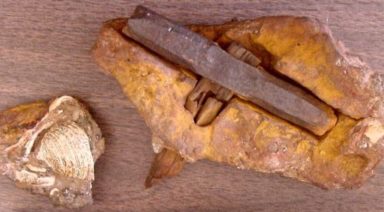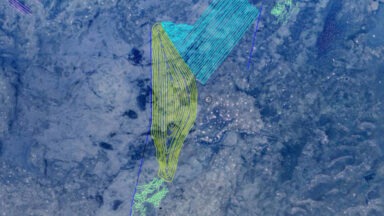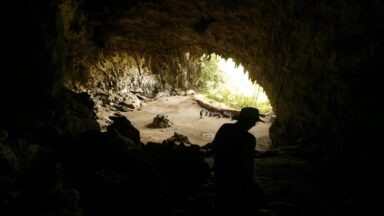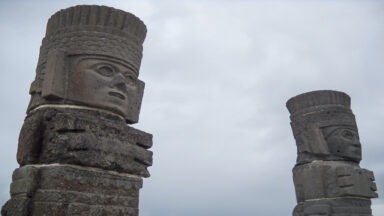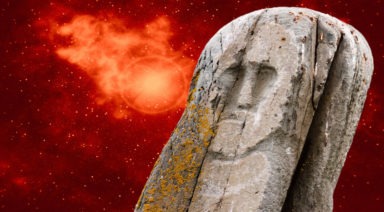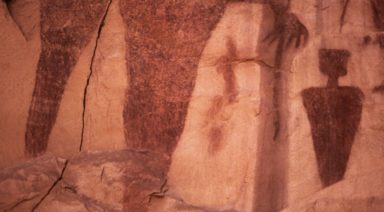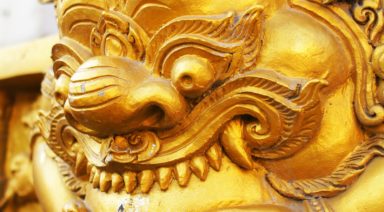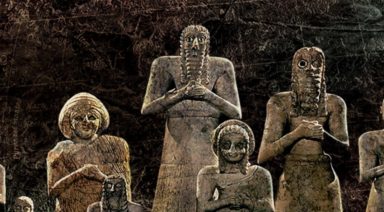Are These Out of Place Artifacts Evidence of Ancient Alien Technology?
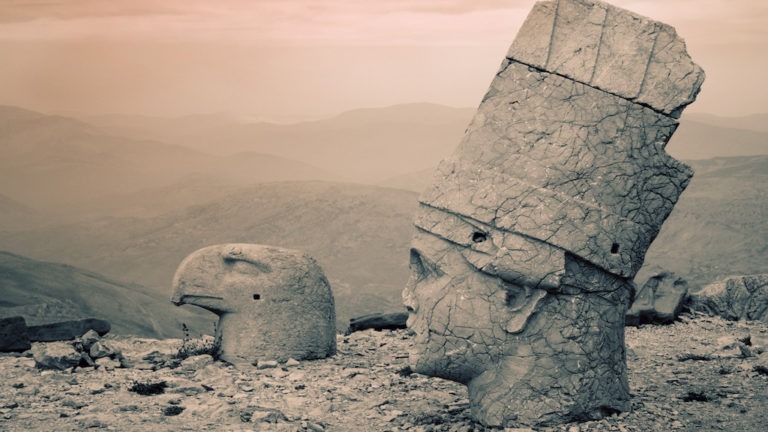
The evolution of technology follows a pretty linear path throughout history. But sometimes we stumble upon anachronistic artifacts that challenge that perception and throw those perceived timelines for a loop. To some, these out of place artifacts are none other than ancient alien technology proving our ancestors were once visited by an advanced race, while others maintain it’s evidence we’ve underestimated the technological faculties of those ancestors.
Here’s a list of alleged ancient alien artifacts — you decide for yourself.
Puma Punku’s Ancient Technology Mysteries
Growing up, most are taught that the Egyptians built the pyramids through primitive means, using simple pulleys and brute force from slave labor. But under deeper scrutiny, this explanation doesn’t seem to make sense. And the same could be said about the temple complex of Puma Punku in Bolivia.
The temple grounds of Puma Punku are believed to date back to between 536 and 600 AD, constructed by a civilization appearing to have been wiped out by a cataclysmic event. Puma Punku is part of the larger, well-known Tiwanaku site, an important location to the Incas, who believe it is the cradle of their civilization – characteristics ancient astronaut theorists might consider significant as well.
This area of Tiwanaku is marked by a decorated megalithic archway known as the “Gate of the Sun,” and according to Freddy Silva, it may be one of the world’s oldest temples. Once home to somewhere between 10,000 and 20,000 people, the name Tiwanaku translates to “navel at the center,” implying it once served as a cultural hub.
Atop the Gate of the Sun is a carving of (https://www.gaia.com/article/viracocha-the-great-creator-god-of-the-incas), the supreme God of the Incas. Silva says that Viracocha and his ilk were described as being much different than the indigenous Incas – white-skinned, bearded, fair-headed, and capable of bending the laws of nature. They were also significantly taller. And these weren’t descriptions of the Conquistadors – they didn’t come along for about another century.
The reports of Viracocha’s superhuman race make the anomalous stonework at Puma Punku all the more interesting. Perfect 90-degree angles, precision cuts, and immaculately even spacing in the stones are shocking, considering the primitive epoch in which they were made. Much of this craft stonework remains distinct to this day, confounding scientists and archeologists alike.

What technology could they have possessed to create such fine masonry and who were the people responsible for such precision work?
The Quimbaya Airplane
One of the more well-known artifacts touted as evidence of ancient alien technology is the Quimbaya airplanes – a series of miniature gold pieces, appearing to depict aircraft.

There’s been debate over what exactly these models portray, as skeptics and mainstream archeologists say they’re simply birds. But ancient astronaut theorists claim some don’t resemble any known birds and more closely resemble jets or modern airplanes.
Their flat wings, stabilizing tails, landing gear, and potential propellers seem to support this assertion.
If correct, it appears these ornate pieces could be the earliest instance of a model airplane, based on technology possessed by the Quimbaya or modeled after an advanced race they encountered who possessed it.
In 1994, this idea led German aeronautical engineers, Peter Belting and Conrad Lubbers to take the theory a step further and create large, radio-controlled models of the Quimbaya trinkets, intending to prove their aerodynamic feasibility. They tested them in-flight with single prop and jet power, finding both designs were in fact flightworthy.
Vimanas: An Advanced Ancient Technology
Much like the Quimbaya airplanes, there is mention of aircraft found in the texts of ancient cultures, and the Hindu Vimanas are one of the more renowned instances. Said to have been piloted by the gods, Vimanas descended from the heavens in many shapes and sizes. The Hindu Vedas describe Vimanas in great detail, leading many to believe they may have been witnessed firsthand.
Today, one can find the shape of a Vimana atop almost every Hindu temple in India. They were described as the chariots of the gods – a familiar name if you’re a fan of ancient astronaut theorist Erich von Däniken.
The word Vimana translates to “having been measured out” or “traversing,” and were described as machines piloted by the gods. Similar to Ezekiel’s vision of the wheel, these crafts emitted large, fiery explosions, and could travel at great speeds and distances. Some were land and seafaring vehicles, while others flew all the way to the moon or further.
One description of a Vimana sounds strikingly similar to modern jet propulsion.
“…it radiated light and reverberated with a deep rumbling sound. Its beauty captivated the minds of all who beheld it. Visvakarma, the lord of its design and construction, had created it by the power of his austerities, and its outline, like that of the sun, could not be easily delineated.”
The Antikythera Mechanism
One of the most famous anomalous artifacts, the Antikythera mechanism, was found in the Aegean Sea between mainland Greece and the island of Crete. It was discovered around the year 1900 in the wreckage of a Roman ship believed to have sunk sometime in the first century B.C.
The mechanism is a multi-geared wheel with individual teeth creating a perfectly differentiated gear system. Many refer to it as the world’s first computer – albeit analog. It was recreated by Dr. Derek de Solla Price in 1974 and more recently has been recreated on a smaller scale to be worn as a watch. However, according to Mathias Buttet, Director of R&D for watchmaker Hublot, its level of technology isn’t found in any modern timepieces.

Antikythera was discovered in the nascent days of diving technology when men wore iron suits with an oxygen tube leading to the surface. Upon discovering the device and other items in the shipwreck, one diver surfaced and reported seeing artifacts, horses, and a crew down below. His captain and crew believed he was intoxicated from the nitrogen mixture pumped down to him, then during a subsequent exploration, one diver died and two others were paralyzed from decompression sickness, a.k.a. “the bends” – some say these stories add to the Antikythera device’s mystery.
It’s generally understood that the device was used to predict celestial phenomena, including the orbits of planets, constellations, and even eclipses. However, its age dates back long before there was any evidence that man understood planets to be round. The science behind the Antikythera device would not be matched for thousands of years, solidifying it as one of the most anachronistic artifacts ever found.
Is Ezekiel's Vision of the Wheel Evidence of UFOs in the Bible?

Of the many accounts in the Bible of strange happenings and otherworldly occurrences, the story of the prophet Ezekiel is one of the more fascinating, especially when looked at through the lens of modern technology. When biblical texts are interpreted through this perspective in general, an interesting picture emerges of the possibility that our ancient ancestors were actually visited by an advanced race, rather than gods.
This idea, known as the ancient astronaut theory, interprets Ezekiel’s “vision” of the Merkabah, or wheeled chariot, as more likely to be a spaceship used by an advanced species to traverse outer space and make contact.
Erich von Däniken is one of the biggest proponents of this theory, providing a very compelling argument for an alternative interpretation of the Book of Ezekiel. So, compelling that his theory even reversed the entire thesis of a NASA scientist’s book aimed at disproving his claim.






